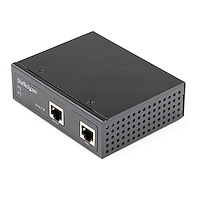I am up in the air about whether it's a good idea to put a network switch in the attic. I have about six CAT6 cables coming into the attic area and connect to a patch panel and the a bundle of wires goes to a network switch in first floor. All of the CAT6 cables supply POE, some need 50 watts.
The patch panel is CAT5E rated not CAT6 and I am having trouble with bad connections.
One idea is to install a network switch in the attic that supplies POE. A good Unifi network switch is $200 but an industrial one that will handle a higher attic temp is $500. And more $$$ for a UPS for this attic switch. And if I go with $200 switch I will need at least one, maybe two POE injectord to get 50 watts as the $200 switch can supply POE but not 50 watts.
Or redo the patch panel and keep switches on first floor.
Or put a max/min thermometer in attic this summer and see how hot it really gets. Leave wiring as is for now.
The $500 industrial switch would be nice but hate to spend that kind of money on a switch.
The patch panel is CAT5E rated not CAT6 and I am having trouble with bad connections.
One idea is to install a network switch in the attic that supplies POE. A good Unifi network switch is $200 but an industrial one that will handle a higher attic temp is $500. And more $$$ for a UPS for this attic switch. And if I go with $200 switch I will need at least one, maybe two POE injectord to get 50 watts as the $200 switch can supply POE but not 50 watts.
Or redo the patch panel and keep switches on first floor.
Or put a max/min thermometer in attic this summer and see how hot it really gets. Leave wiring as is for now.
The $500 industrial switch would be nice but hate to spend that kind of money on a switch.

